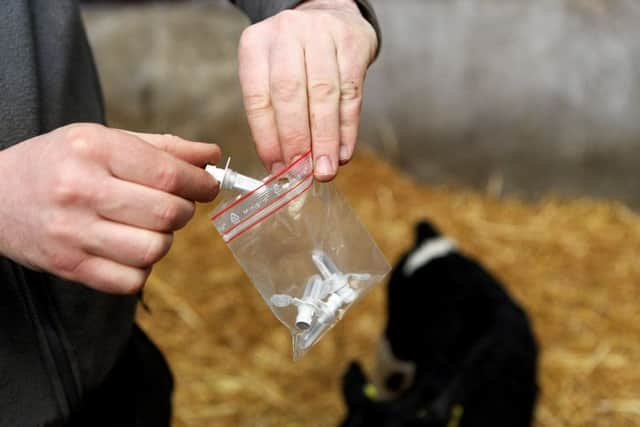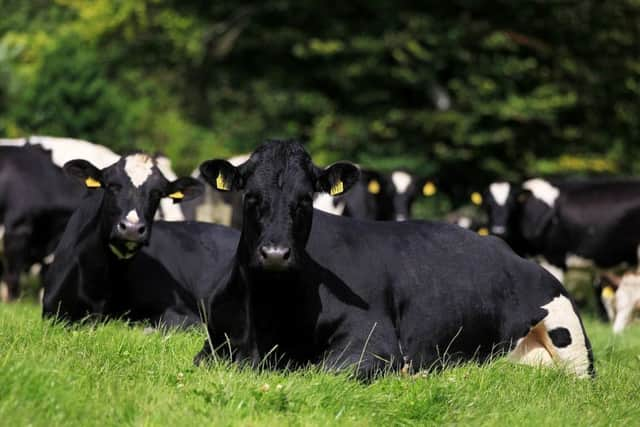Getting ready forthe breeding season


Body Condition Sore (BCS)
Good monitoring of BCS and maintaining targets of BCS at calving and breeding is one of the most important factors for regulating fertility in the cow. It is essential to avoid over-conditioning of cows during the dry period as the more excessive the BCS at calving, the more condition the cow will lose in early lactation.
Ideal targets to bear in mind include a BCS of 3.0-3.25 at calving followed by a target of 2.9 at breeding. Cows have a much improved chance of resuming normal ovarian activity at a BCS of 2.75 or greater with a rising plane of nutrition.
Advertisement
Advertisement


Silage analysis at this time is often recommended as nutritional quality of grass silage is often variable. Ensuring good feed space, water availability and avoiding high stocking rates during housing can all improve on feed intake.
Dystocia
Cases of dystocia can significantly impact a cow’s fertility and subsequent return to service. Despite the best efforts in selecting easy calving bulls and focusing on good development of replacement heifers, calving difficulty will arise. It is important to know when the appropriate time is to intervene and also when to seek assistance from a veterinary practitioner. If a heifer has not made significant progress in delivering her calf within 30 minutes, it is often time to intervene or seek help.
Infectious Disease


Control
Many infectious disease processes can threaten a successful breeding season. Two of the most common culprits include Leptospirosis and bovine viral diarrhoea virus (BVD) infection.
l Leptospirosis is one of the most common causes of abortion in cattle in Ireland and its effects on fertility include low pregnancy rates and increased culling due to infertility. It is a zoonotic disease which means it can cause disease in humans. The main source of infection is often from urine containing leptospires that splashes into the eyes of susceptible animals, or contaminates pasture, drinking water and feed.
Advertisement
Advertisement
Vaccination can be critical in controlling the negative effects of this disease and one vaccine, Leptavoid H, has been proven to increase conception rates in herds where infertility caused by Leptospira hardjo has been diagnosed. The primary vaccination course consists of two injections four to six weeks apart and is administered at least two weeks prior to breeding. It is recommended to booster animals early in spring in order to cover the heaviest period of risk of infection which is normally from April to June.
l Circulating BVD infection in herds, in tandem with causing negative effects on fertility, can also lead to significant reductions overall in cattle production. The results from year one of the Northern Ireland eradication programme which commenced in March of 2016 have been positive.
Farmer compliance has been excellent and all stakeholders have worked well together to achieve progress and retain the focus on BVD eradication. The key aim of this programme is to reduce the number of persistently infected (PI) animals being born and to reduce the numbers which remain on farm. Vaccination helps fulfil this aim e.g. Bovilis BVD vaccine is licensed to protect the unborn calf from transplacental infection with BVD virus.
PI calves occur when a naive dam (heifer or cow) comes into contact with BVD virus during a certain stage of pregnancy, usually between one to four months approximately. The primary vaccination course, with Bovilis BVD, consists of two injections four weeks apart and an annual booster vaccination at least four weeks prior to breeding. Additional extremely important measures to control BVD include ear-notch testing, and follow-up, to remove PI’s, maintaining high standards of biosecurity and, when moving towards disease freedom, consideration can be given to screening to act as an early warning system for disease re-entry/confirm ongoing freedom.
Advertisement
Advertisement
Both Bovilis BVD and Leptavoid H can be conveniently administered together at the same time to animals greater than 15 months old. It is always important to consult your veterinary practitioner regarding screening for infectious diseases and implementation of vaccination programmes.
By paying attention to the factors mentioned in this article great strides can be taken in achieving optimal fertility in your cows. Ensuring cows are of good BCS at calving, monitoring that BCS in early lactation, strict supervision of cows for dystocia combined with control programmes for infectious diseases, will all positively contribute to a successful breeding season.